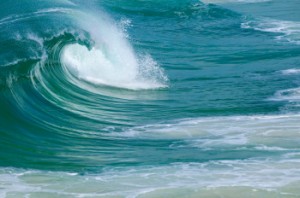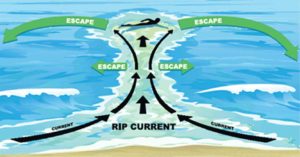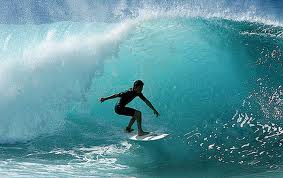
Costa Rica water safety tips are extraordinarily important to your welfare while enjoying your family vacation in paradise. If you plan on swimming at any of the breathtaking Costa Rica beaches, it’s imperative to know how to handle yourself in rough water and rip tides, just in case.
Book your vacation rental TODAY!
Costa Rica, a popular vacation destination, is well known for its world class surf breaks, massive waves, and is a favorite surf trip destination. From the Nicoya Peninsula through to the Central and South Pacific, the Costa Rica Gold coast is a paradise for those wanting to surf Costa Rica. But these popular surf spots are not without danger. Costa Rica beach safety knowledge is extremely important to your welfare, as many of the beautiful white sand beaches are prone to riptides.
There’s no doubt that Costa Rica has some of the most stunning beaches in the world, but there are a few Costa Rica beaches that are fairly dangerous. According to statistics released by the Costa Rican National Tourism Institute (Instituto Costarricense de Turismo), 80% of the 150 to 200 recorded drowning related deaths are caused by riptides.
Costa Rica Riptides: What is a Riptide?
Riptides are very strong sea currents that push away from the shoreline. Rip currents are formed by strong winds pushing the sea towards shore. These currents can form hundreds of miles offshore but still have the potential to create strong Costa Rica riptides. Rip currents are dangerous, and it’s best to brush up on your Costa Rica water safety. Learn how to identify rip tides and stay out of them.
Rip currents are at their strongest during high tide, and you can sometimes spot them from the Costa Rica shoreline. They look very much like a muddy stream. The incoming waves create an underwater sandbar close to the shoreline. If any part of the sandbar collapses, water is pushed through the gap, creating a strong and narrow current which essentially drags everything out to sea. This narrow channel of water is rarely more than 30 meters wide.
Costa Rica Safety: How do I get out of a rip current?

It is important to try to keep your feet on the sea bed as much as possible when swimming in rough water. The perfect conditions for Costa Rica surfing are often the perfect conditions for rip tides, as well. If you get caught in a swell and notice the beach landscape swiftly passing you by, it’s likely that you have been caught in a riptide. The following Costa Rica water safety tips will help you navigate the riptide safely:
1. Don’t Panic!
2. You should never try to swim back to shore if you get caught in a riptide.
3. Try to regain your footing, if possible, but don’t put up too much of a struggle— you’ll need your energy to stay afloat.
4. Lie on your back and float, pushing your hips and face out of the water.
5. Expect to be dragged out for one hundred to two hundred meters. Remember that a riptide will not drag you under water. It will drag you out to sea.
6. You’ll notice that the current weakens and you will be able to calmly swim parallel to the shoreline, which will let you escape the riptide.
Costa Rica Beaches with Riptides?
Riptides are found at a number of beaches in Costa Rica, especially the surfing hotspots. Of course, the best way to avoid a riptide is to stay away from the sea, but if you’re an avid surfer eager to catch your next big Costa Rica surf breaks, that’s easier said than done.
Although some of the most popular beaches in Costa Rica enjoy the vigilance of lifeguards, there are many that do not. Don’t assume that because you can see people swimming in the sea, it’s safe.
Costa Rica beaches known for riptides:
- Playa Espadilla at Manuel Antonio
- Jaco Beach
- Dominical Beach
- Playa Hermosa near Jaco
- Playa Herradura on the Pacific Coast
Costa Rica beaches offering the safest swimming conditions:
- Playas Rajada and Jobo near La Cruz
- Bahía Junquillal Wildlife Refuge
- Plays del Coco
- Sámara
- Carillo
- Bahía Ballena/Tambor
- Beacheson the Golfo Dulce between Puerto Jimenez and Golfito
- Playa Manuel Antonio
- Little Dominicalito in Dominical
- Uvita
Water Safety in Costa Rica – pass it on
Yes, we know Costa Rica is a beautiful country and the beaches are very inviting, but before you jump in, think!
- Many beaches in Costa Rica are deserted. The most important piece of Costa Rica water safety advice you should adhere to is never surf alone. Take along a surfing buddy so you can both look out for each other.
- Don’t go into the sea if you have been drinking or have just eaten a heavy meal!
- If you are not a strong or confident swimmer, then use your head. Keep your water adventures restricted to the shallow end of the swimming pool back at your Costa Rica vacation rental!
- Try to keep your feet on the sand or sea floor as much a possible when swimming in rough water or Costa Rica surfing conditions.
- Watch out for rocks that might not be visible during high tide.
- Visiting an unfamiliar beach in Costa Rica? Ask around and find out what the surfing conditions are like and if the beach has riptides. Look out for warning signposts, but don’t expect them to be present at all of Costa Rica’s beaches.
- If you are a knowledgeable surfer and have visited Costa Rica before, you may already know about riptides and water safety. Be sure to pass on your experience to surfing newbies who may get caught in a dangerous current.


 +1 888-818-2097
+1 888-818-2097
 +506 8932-4731
+506 8932-4731